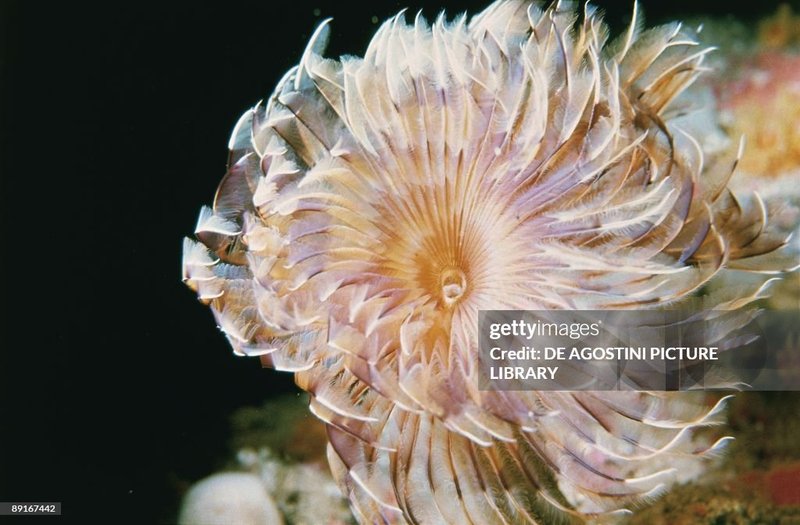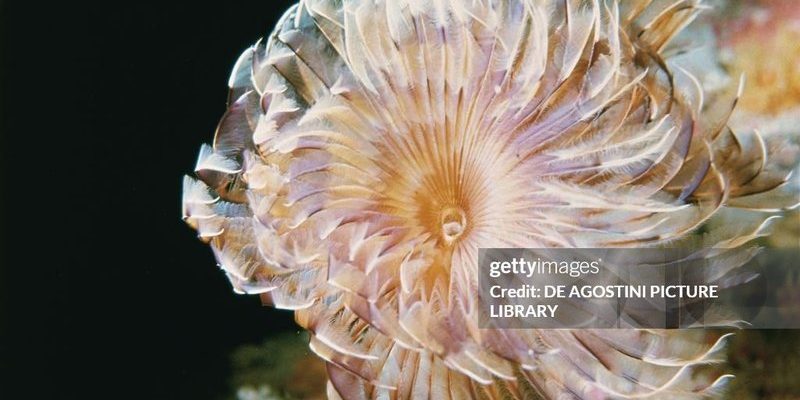
In simple terms, Sabellid fan worms belong to a group of marine annelids, the same family of creatures that includes earthworms—we just don’t see them as often. As we dive into this topic, you might be wondering what makes these tiny wonders special, how they live, and why they matter to the ecosystems they inhabit. Let’s unpack the enchanting world of Sabellid fan worms together.
What Are Sabellid Fan Worms?
Sabellid fan worms are marine worms known for their beautiful, feathery crowns that extend from their burrows. These crowns aren’t just for show; they serve several important functions, including feeding and respiration. Picture the way a bird fans out its feathers to attract attention or display beauty; that’s essentially what these worms do underwater.
These creatures live in tubes made from sediment and organic materials, which they construct to protect themselves from predators. You can often find them in shallow coastal waters and muddy environments where they can dig in and establish their homes. The vibrant colors of their fan-like structures can range from deep reds to bright blues, making them a striking sight against the backdrop of green algae or sand.
When it comes to their size, Sabellid fan worms can vary quite a bit. Some species are just a few centimeters long, while others can reach up to 30 centimeters. They thrive not only in temperate waters but also in tropical regions, showcasing their adaptability to different marine environments.
Habitat and Distribution
Sabellid fan worms are found in a variety of marine habitats. You might bump into them in coral reefs, sandy seafloors, or even rocky shorelines. Their habitat preferences often depend on the specific species, but they all tend to favor clean, nutrient-rich waters.
Here’s the thing: their tubes provide a safe haven where they can hide from predators while also allowing them to filter food from the water. They do this by extending their feathery crowns, which trap tiny plankton and organic particles. In this way, fan worms take part in the food web, contributing to the overall health of their ecosystems.
Interestingly, geographic distribution plays a big role in their biodiversity. You’ll find different species of Sabellid fan worms in various oceans across the globe—from the Atlantic and Pacific to the Indian Ocean. In fact, some areas, like the Caribbean, are hotspots for these worms, showcasing a rich tapestry of species.
Feeding Habits
You might be curious about how these delicate-looking creatures actually eat. Sabellid fan worms are filter feeders, meaning they rely on currents to bring food right to their doorsteps. Their crowns, which can resemble the shape of a fan, are pretty impressive at capturing microscopic food like phytoplankton and detritus.
When food particles are caught in the crown’s bristles, the worm uses cilia, tiny hair-like structures, to move the food toward its mouth. It’s almost like having a tiny conveyor belt delivering tasty snacks! This clever method allows them to efficiently gather nutrients without needing to move far.
Additionally, their feeding strategies play a crucial role in maintaining the health of their environments. By filtering out excess organic material, they help keep the water clean and clear, benefiting other marine life. Imagine a restaurant where everyone’s a picky eater—Sabellid fan worms help ensure that the menu stays fresh.
Reproduction and Life Cycle
The reproduction of Sabellid fan worms can be both fascinating and complex. Most species are *dioecious*, meaning they have separate male and female individuals. During the breeding season, they release gametes (sperm and eggs) into the water column. This process is known as *spawning*, and it usually occurs in response to environmental cues, like temperature changes or lunar cycles.
Once the eggs are fertilized, they develop into larvae that drift in the ocean for a few weeks, undergoing several transformations. These larvae eventually settle on a suitable substrate, where they will develop into adults. It’s a bit like a grand adventure, starting off as tiny, free-swimming creatures before finding their forever home.
Interestingly, some species of Sabellid fan worms can also reproduce asexually by budding. In this case, new worms grow from the body of the parent worm, effectively cloning themselves. This method allows for rapid population growth in favorable conditions, which can be crucial for their survival.
Ecological Importance
So, why should we care about Sabellid fan worms? These tiny creatures play a significant role in marine ecosystems. Not only do they filter water, but they also provide shelter and food for various organisms. Think of them as tiny apartment buildings for fish and invertebrates. Many small fish and shrimp find refuge among the tubes, helping to support the local biodiversity.
Furthermore, their feeding habits contribute to nutrient cycling in marine environments. By filtering organic materials, they help maintain water clarity and quality, benefiting a wide range of marine life. Healthy waters mean healthier coral reefs and habitats for fish, which makes these worms integral to keeping ecosystems thriving.
Climate change and pollution pose threats to their habitats, and understanding the role of Sabellid fan worms can be key to conservation efforts. By protecting these creatures, we’re also looking out for the overall health of our oceans.
Challenges and Conservation
Like many marine species, Sabellid fan worms face challenges due to human activities. Pollution, habitat destruction, and climate change can significantly impact their populations. Coastal development and increased sedimentation can smother their delicate habitats, while warming ocean temperatures can alter their breeding cycles.
Conservation efforts are crucial to protecting these fascinating creatures. One way to help is by supporting clean water initiatives, which aim to reduce pollution and protect marine environments. Participating in beach clean-ups and advocating for sustainable practices can also make a positive difference.
Additionally, educating others about the importance of marine species can foster a greater appreciation for the underwater world. The more we know, the more we can act to protect these unique creatures and their habitats.
In summary, Sabellid fan worms are more than just pretty faces in the ocean; they’re vital contributors to marine ecosystems. From their beautiful feathery crowns to their unique feeding strategies, these worms play an important role in filtering and cleaning our waters.
As we’ve seen, they face significant challenges, and understanding their role can help us advocate for their protection. So, next time you’re near the ocean and spot one of these colorful little wonders, remember: they’re not just worms; they’re essential players in the health of our seas. By appreciating and protecting them, we’re also safeguarding the vibrant ecosystems that depend on their survival.

